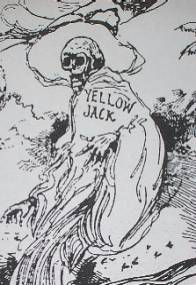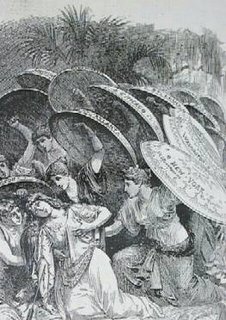Last Night I Talked About History
 Last night I gave a lecture on Jacksonville history to a group at the Maxville Branch Library.
Last night I gave a lecture on Jacksonville history to a group at the Maxville Branch Library.As usual, a bunch of rusty artifacts I’ve found over the years illustrated the lecture. A hand-forged ax, a Civil War sword, a toy cast iron horse, a 1901 rum bottle, a burning tea bag, a newspaper front page announcing the sinking of the Titanic, and other odds and ends which I use as lecture notes and crutches to help me in public speaking.
The folks who attended the talk displayed a keen interest and contributed greatly to my understanding of local history because many of them have ancestors whose stories they told.
- One lady told about finding arrowheads near a local creek.
- Another told how she once had the first issues of Wonder Woman, Superman and Batman comic books — which her mother gave away!
- A retired sailor told about icebergs he encountered.
- Another man talked about his knife collection…
Thus the audience enlightened me as much as I could them.
We talked about how fires and disease shaped much of Jacksonville’s history.
My grandmother, an old country Cracker, only recognized two types of illness: the dying person either had Creeping Corruption, or Galloping Eruption. Those two terms covered it all as far as Grandma was concerned.
The lecture group also talked about the heroic actions of nurses during the 1888 Yellow Jack plague.
Yellow Jack was the personification of yellow fever.
During the quarantine, the mayor of Montgomery, Alabama, offered a $100 reward to anyone shooting or capturing an escapee from Jacksonville.
Other cities even refused to accept mail from Jacksonville.
On the other hand, a contingent of 18 Red Cross nurses from New Orleans took a train to come relieve suffering in Jacksonville, but the train engineer refused to stop in the plague zone.
It was after midnight in a torrential downpour when the nurses jumped from the moving train in MacClenny in order to reach the sick who needed them.
They stayed in this area for 79 days often working shifts of 72 hours without sleep. Some carried patients on their backs for miles to seek help. These nurses earned $3 a day.
Apparently, eight of them died of the fever.
An editorial cartoon of the day shows other cities defending stricken Jacksonville:

But of course there was no defense; no one at the time knew the cause or cure of Yellow Fever. Plagues of Yellow Jack decimated Jacksonville in 1872, 1877 and 1888.
In 1898, during the Spanish American War more soldiers died here in Jacksonville because of typhoid fever than were killed in battle.
No one knows how many people Spanish Lady, the personification of Spanish flu, killed here in 1918. The record keepers themselves died. In Evergreen Cemetery row after row of markers show that six or eight members of the same family died within a day or two of eachother.
So many died that mass pit burials became necessary. Some of these were located near the present-day Gateway Mall.
The prospect of epidemic disease, such as bird flu, which could be a more efficient killer than either Yellow Jack or Spanish Lady, frightens us.
Yet even in the face of wide-spread disease the death rate stays the same as always.
Whether we face plague, fever, or Captain Trips himself, the death rate does not change.
Cancer, AIDS, a drunk driver, swallowing a peach pit, heart attack, shark attack —no matter what the threat, the death rate remains the same — One per person.
That’s something to think about.
Of course we should take prudent measures to protect life and to comfort the dying. That’s common sense.
But a plague death is certainly nothing more for us to worry about than any other kind death.
“And as it is appointed unto men once to die and after this the judgment: so Christ was once offered to bear the sins of many.”
If nothing else, history shows that the road doesn’t end here.
You may not have guessed it, but I really love giving history talks.
Please, visit my website for more www.cowart.info and feel free to look over and buy one of my books www.bluefishbooks.info
posted by John Cowart @ 9:18 AM


1 Comments:
Plagues are so scary.
I like your Captain Tripps reference. "The Stand" is my favorite book and movie. I have the DVD of the TV movie. It is about 8 hours long. My husband and I watch it a couple of times a year. It really makes you think. West Virginia was a hotbed for all kinds of terrible illness as well. Like Scarlet Fever, Yellow Fever and as we like to call it, "The Crud".
I have had "The Crud" for about a month and a half. I feel bad all day long...I have to get better soon.
Hack Hack,
Michael
Post a Comment
<< Home